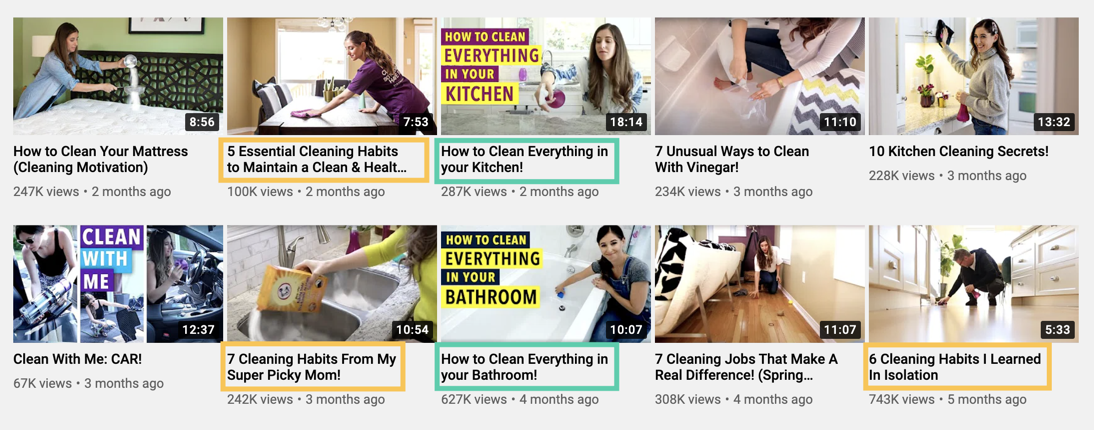Your old content is a treasure trove of new ideas. But only a fraction of marketers take advantage of them.
With every new piece of content you create, not only can you republish and repurpose it, you can mine it for additional ideas outside of the main topic to create sequels, spinoffs, and other related content.
Think about it:
In your average 1,500-word blog post, there might be one main topic or theme.
But within that will likely be a handful of key points or topics.
And within each of those will be more details and examples.
Any of those points has the potential to be your next hit piece of content, as long as you think to take advantage of them.
I like to call it “the sequels and spinoffs” method of brainstorming.
Let’s look at how you can use it the next time you need to fill your content calendar.
1. Write Sequels to Old, But Still Relevant, Content
The first way to use old content to come up with new ideas is to consider which of your old posts might need a “part 2” (or even “part 3”).
This will be the case if the content’s general topic is still relevant, but the rest of the information is not.
For example, think of things like guides to social media image sizes. This topic is always relevant, but the actual information changes frequently.

Updating the existing piece of content for a topic like this would be overwhelming.
So much of the information changes, and so often, that it can easily become a project management and systems nightmare for the marketer tasked with keeping it up-to-date.
So instead, many brands create an annual guide for something like this.
They publish a new sequel once a year, link to the most recent edition from past years, and both audiences and marketers know when the next update will happen.
The sequel strategy is great for any idea where the topic is consistently talked about by your ideal customer, but the details change often or dramatically.
That aspect makes it easier to write a new post than try to edit the old one.
(I might be the biggest fan of content repurposing out there, but sometimes it is easier to just start fresh.)
2. Spin Tangential Ideas Into Dedicated Topics
The second way you can create new content based on your older stuff is to create spinoffs.
Just like what “Frasier” did with “Cheers,” this is when you take a minor part of an existing piece of content, and give it its own time to shine.
Done well, you can build on the success of your original piece.
Spinoffs work great for continuing momentum of successful content, regardless of how old or outdated it is.
You’ll see YouTubers do this a lot when a video goes viral.
Knowing the YouTube algorithm can be very theme-focused, when a video takes off, YouTubers want to make sure they have other videos on the same theme for YouTube to recommend to viewers as well.
A bonus benefit is that once you have multiple spinoffs of the same theme, it’s easy to pull them all together into a playlist, series, or sequence, depending on the content’s format.
For example, in the screenshot below, you can see the YouTube channel Clean My Space has two different series of spinoffs going at the same time: one on cleaning habits and another on room-specific cleaning methods.

When it comes to what parts of an existing content to spin off into its own content, consider:
- Subheadings or subsections of the original content.
- Bulleted or numbered lists.
- Impactful stories, statistic, or examples.
- Conclusions drawn.
- Pieces of advice given.
Really, any idea or piece of information that’s not already the main point of one piece of content, can become the main point of another.
3. Provide Fan Service by Answering Feedback
A third way to turn your archives into new content is by looking at what your audience has said in the comments or their social media shares.
Between asking follow-up questions, requesting clarification on certain specifics, and sharing their own stories, experiences, and perspectives, an engaged audience is full of new content ideas.
Of course, being able to do this requires engaging an audience and listening to what it has to say.
For this, depending on your team structure, you may want to work in collaboration with your company’s social media or community management team.
Customer support is also a great department to bring into the loop, or whoever frequently answers the emails sent through your company’s contact form.
But once you’re consistently sharing your content with an engaged audience and paying close attention to how they react, this becomes an ongoing feedback loop that you can turn to for content ideas at any time.
4. Go Back & Fill Missing Gaps
Finally, think about your content’s plot holes, or the things you think are missing from a piece of content when you look at it in hindsight.
New content is a chance to go back and fill in the gap.
This can also be informed by audience feedback, but often comes to you all on your own.
How often have you pressed “publish” in WordPress only to think of a whole section you wish you’d added later that day?
Next time that happens, don’t let go of the idea.
Capture it and save it for the next time you’re creating content, and you can go back and fill in the gap.
For example, I once wrote a blog post about list building tactics that didn’t mention opt-in quizzes.
But once I created a quiz myself and saw how fun and effective they were, I wish I had. So I went back and created a dedicated video about using them for lead generation.
Spin off Strategically
You now have four new ways to spin off new ideas from old content.
But like any other part of your content strategy, you want to be as strategic as possible with this.
So let me leave you with a few reminders:
- Don’t spin off ideas that don’t fit your larger content strategy. Just because you can, doesn’t mean you should.
- Don’t be afraid to repeat yourself. Mentioning an idea and devoting an entire piece to it are very different things.
- Do remember to add internal links from your original piece back to the spinoff piece, and vice versa.
More Resources:
- 25+ Unique Blog Post Ideas to Engage Your Readers
- How to Repurpose 1 Blog Post into 80+ Pieces of Content
- Content Marketing: The Ultimate Beginner’s Guide to What Works
Image Credits
All screenshots taken by author, October 2020





